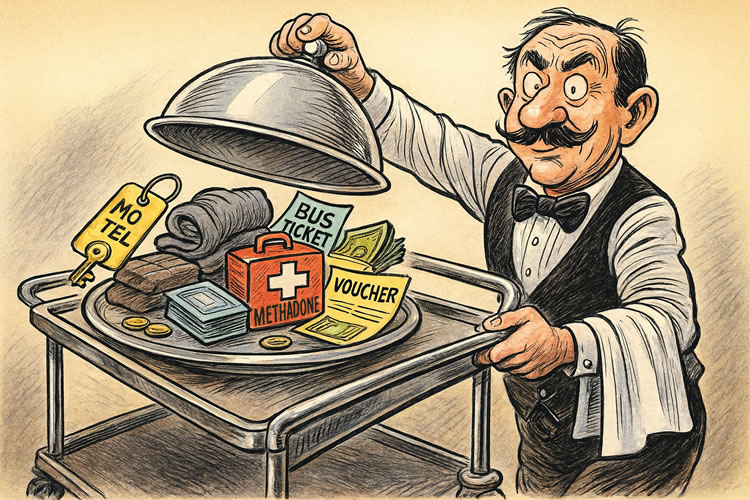When you step back from headline tax rates and examine Vermont’s public spending through a regional and functional lens, the mismatch between what’s expected and what’s actually sustainable becomes glaring. Vermont—largely rural, modestly industrialized, and with minimal corporate anchors—sustains spending levels nearly on par with far larger, wealthier states. But while state government has expanded its reach and programming year after year, the cost burden continues to shift toward individual residents. It’s Vermonters—not the state—who make the sacrifices, trimming family budgets to keep up with rising taxes, fees, and mandates. Recent budget developments only underscore the urgency of this reality check.
The Numbers Don’t Lie
By fiscal year 2024, Vermont’s total state spending—including General, Education, Transportation, and special funds, but excluding federal transfers—hit approximately $6.2 billion. Add federal inflows, and the total rises to $8.7 billion. Spread across Vermont’s population of roughly 645,000, that amounts to $13,500 per person.
But that calculation obscures the true burden. Not everyone pays into the system equally. Using a more meaningful denominator—the approximately 400,000 working-age Vermonters who actually contribute income, property, and consumption taxes—per-person spending jumps to nearly $21,750 annually. That’s a staggering figure for a state with severely limited business tax revenue and an aging population.
Recent developments from the Emergency Board and Joint Fiscal Committee meetings paint an even starker picture. While General Fund revenues for FY27 are projected to increase by 2.5% or $61.2 million, this modest growth won’t cover basic fixed costs like state employee salary increases, benefits, and pension payments. As legislative leaders acknowledged, “adjustments to programs and services” are inevitable—bureaucratic speak for cuts.
The Comparison Problem
In theory, larger metropolitan areas like New York or Los Angeles can justify higher per-capita spending because they benefit from diverse revenue streams: Fortune 500 headquarters, robust tourism sectors, concentrated development, and export industries. Vermont lacks these economic engines entirely.
The education spending disparity is particularly telling. Vermont’s per-pupil K-12 spending reached $26,345 in 2023, ranking among the highest nationally. Only Washington, D.C. ($31,629) and New York State ($30,012) spend more per student. Meanwhile, many large states with metropolitan areas exceeding Vermont’s entire population spend significantly less—Iowa averages $13,800 per pupil, while the national average hovers around $17,700.
Even New Hampshire, Vermont’s small-state neighbor with a similar rural character, spends approximately $21,900 per pupil—$4,400 less than Vermont despite comparable or sometimes superior economies of scale. This suggests Vermont’s spending levels aren’t just unsustainable—they’re unnecessary.
Federal Dependency Creates Vulnerability
Vermont’s reliance on federal funding—over $3.1 billion annually—creates dangerous vulnerability. As legislative leaders noted, the state “will not be able to backfill all potential losses of federal funds” if Washington reduces spending. Policy changes and budget reductions from the federal level could force rapid adjustments that Vermont’s current spending structure simply cannot absorb.
This federal dependency represents a classic liberal policy trap: expanded services funded by external sources create constituencies that resist downsizing even when the funding disappears. The result is either crushing tax increases on residents or painful service cuts that could have been avoided with more modest initial expectations.
Two Paths Forward
Scenario A: Status Quo Spending
- Total per-payer burden: ~$21,750 annually
- Education costs alone: ~$26,300 per student (representing over 30% of median household income)
- Combined with healthcare, transportation, and other services, total government burden approaches 40% of gross income before residents address basic needs like housing, utilities, and food
🍁 Make a One-Time Contribution — Stand Up for Accountability in Vermont 🍁
Scenario B: Sustainable Spending If Vermont targeted spending parity with similar rural states—aiming for an all-fund per-payer cost of $12,000 to $14,000—the state could:
- Reduce annual spending by 40-45%
- Allocate approximately $18,000 per pupil in education—still above national averages but within reason
- Rely more heavily on competitive grants, leaner administrative structures, and regional cooperation
- Create breathing room for economic growth and population retention
The Economic Reality
Vermont’s fundamental challenge is structural: a small tax base supporting outsized government commitments. This creates a vicious cycle where high taxes drive out productive residents and businesses, further shrinking the revenue base and forcing even higher rates on those who remain.
Current residents effectively pay nearly half their gross income to various government entities and fees before addressing necessities. This level of extraction strangles economic dynamism, discourages entrepreneurship, and makes Vermont increasingly unaffordable for working families.
A Realistic Target
Vermont currently spends roughly $8.7 billion all-in, or approximately $21,750 per working contributor. A more sustainable target, based on peer-state benchmarks and economic capacity, would be $4.5 to $5.5 billion total, or $12,000-$14,000 per payer.
This reduction wouldn’t require eliminating core services. Instead, it would mean rightsizing expectations to match economic reality—streamlining administration, eliminating redundant programs, embracing regional cooperation, and focusing resources on truly essential functions.
Summary: Fiscal Reality Check
| Metric | Current Spending | Sustainable Target |
|---|---|---|
| Total All-Fund Spending | ~$8.7B | ~$4.5-5.5B |
| Per Working-Person Cost | ~$21,750/year | ~$12,000-14,000/year |
| Per-Pupil Education | ~$26,345 | ~$18,000 |
| Taxpayer Burden | ~35-40% of income | <25% of income |
Aligning Vermont’s spending with its economic profile won’t be painless, but it’s necessary for long-term viability. The alternative—continuing to extract unsustainable amounts from a shrinking productive base—leads inevitably to economic decline and population exodus. True fiscal responsibility means matching commitments to capacity, not wishful thinking. Until then, the burden will continue shifting onto households forced to cut back while the state does not.
Dave Soulia | FYIVT
You can find FYIVT on YouTube | X(Twitter) | Facebook | Parler (@fyivt) | Gab | Instagram
#fyivt #VermontTaxes #StateSpending #MiddleClassSqueeze
Support Us for as Little as $5 – Get In The Fight!!
Make a Big Impact with $25/month—Become a Premium Supporter!
Join the Top Tier of Supporters with $50/month—Become a SUPER Supporter!









Leave a Reply to Robert FireovidCancel reply